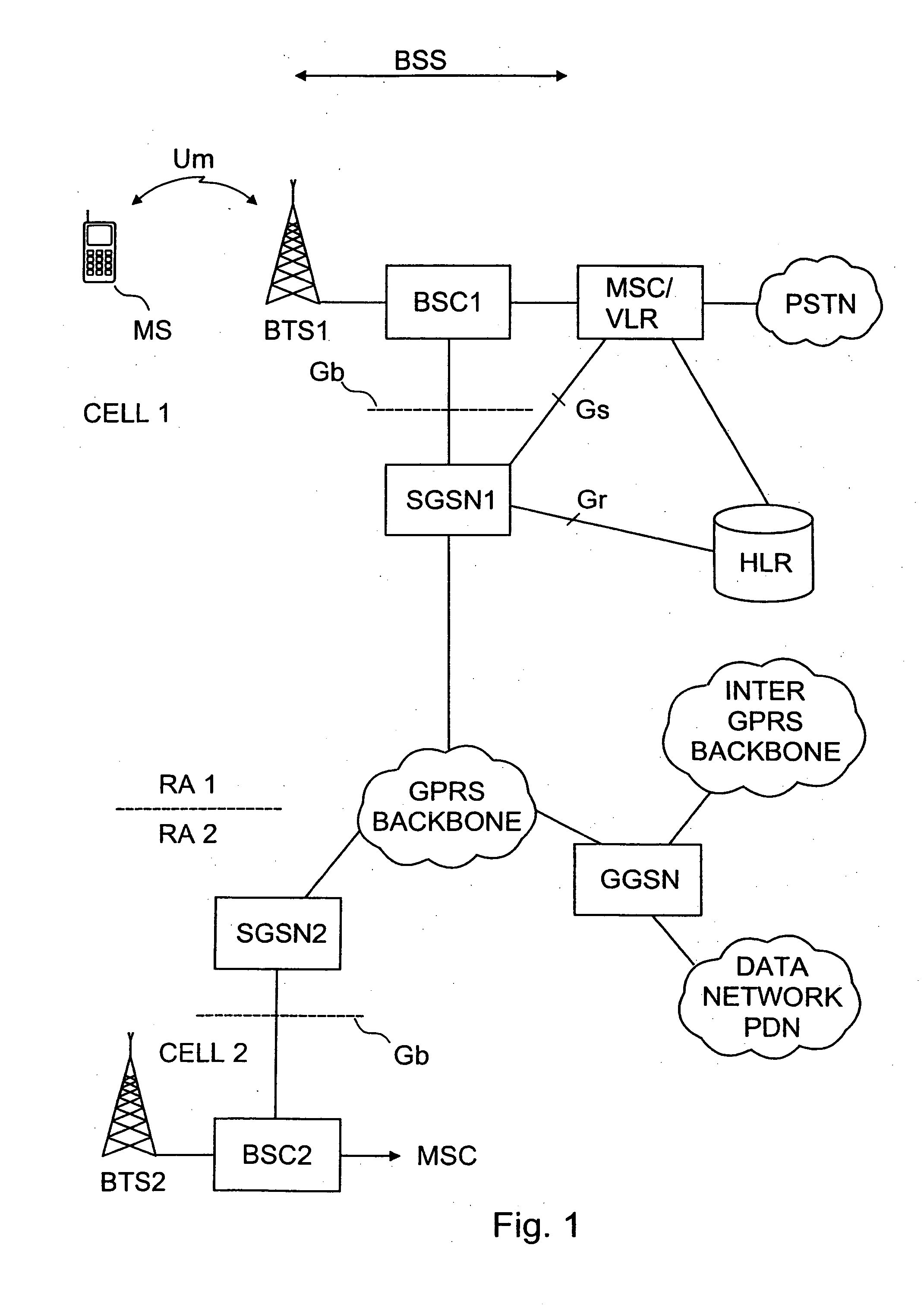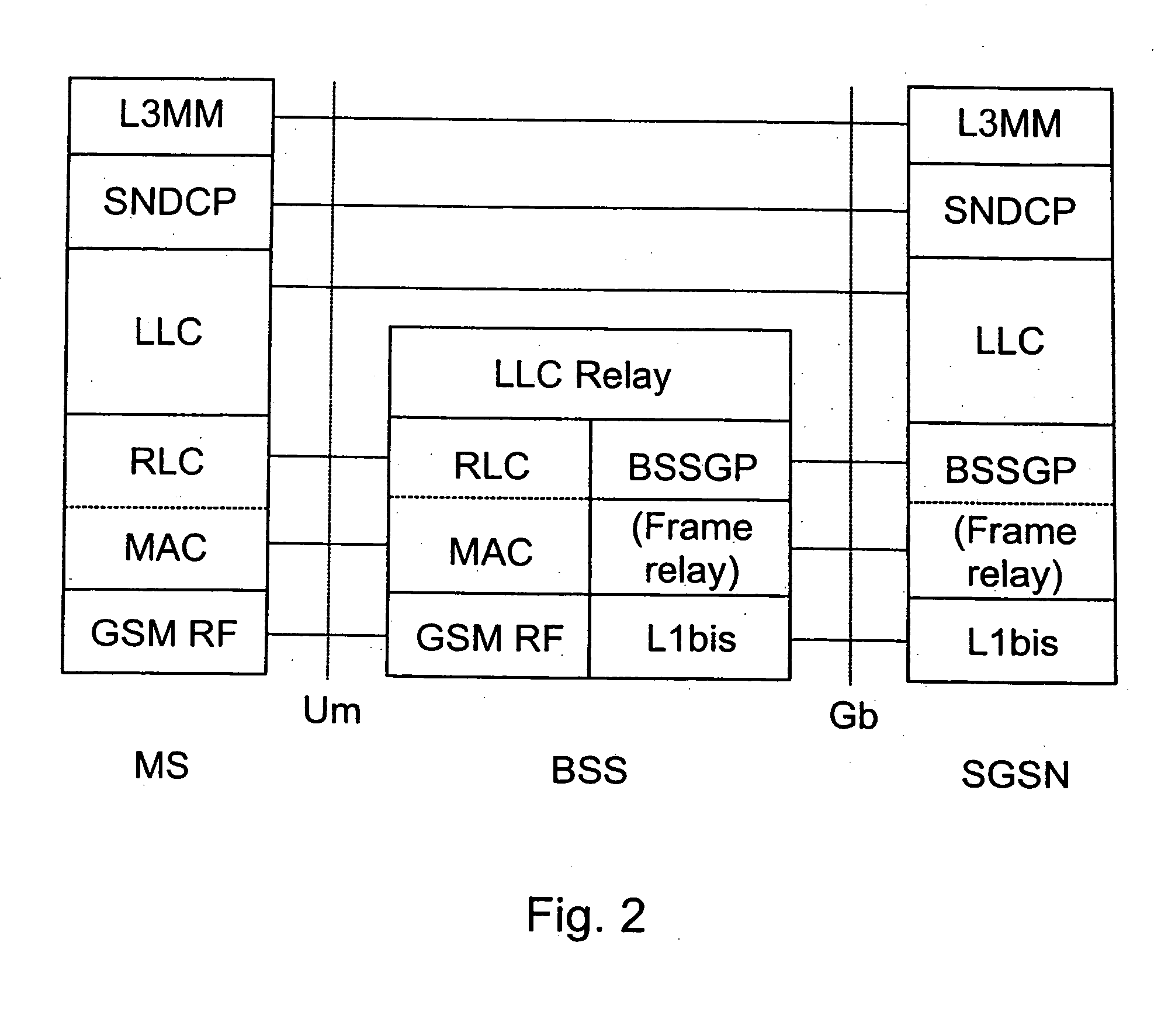Address acquisition
a technology for acquiring addresses and addressing, applied in the field of acquiring addresses, can solve problems such as inability to guarantee and undesirable multicasting over the air interfaces
- Summary
- Abstract
- Description
- Claims
- Application Information
AI Technical Summary
Benefits of technology
Problems solved by technology
Method used
Image
Examples
Embodiment Construction
[0096] FIGS. 1 to 3 have been described above.
[0097] The invention is concerned with the acquisition of an address of a node in a subnet within a communications system operating according to IPv6.
[0098] A protocol according to the invention will now be described. A mobile station requires an IPv6 address. The mobile station either derives a PDP address (interface identifier) from statically configured information or generates it randomly. There are several potential sources of such statically configured information. It may be the IEEE EUI-64 identifier of its hardware interface (as specified in “IP Version 6 Addressing Architecture”, IETF RFC 2373, July 1998) or the GPRS Tunnelling Protocol (GTP) tunnel ID (TID) based upon static information within the mobile station. Alternatively, the interface identifier may be derived from a combination of the NSAPI relating to a PDP context and a unique identifier of the mobile station, such as the international mobile subscriber identity (IM...
PUM
 Login to View More
Login to View More Abstract
Description
Claims
Application Information
 Login to View More
Login to View More - R&D
- Intellectual Property
- Life Sciences
- Materials
- Tech Scout
- Unparalleled Data Quality
- Higher Quality Content
- 60% Fewer Hallucinations
Browse by: Latest US Patents, China's latest patents, Technical Efficacy Thesaurus, Application Domain, Technology Topic, Popular Technical Reports.
© 2025 PatSnap. All rights reserved.Legal|Privacy policy|Modern Slavery Act Transparency Statement|Sitemap|About US| Contact US: help@patsnap.com



